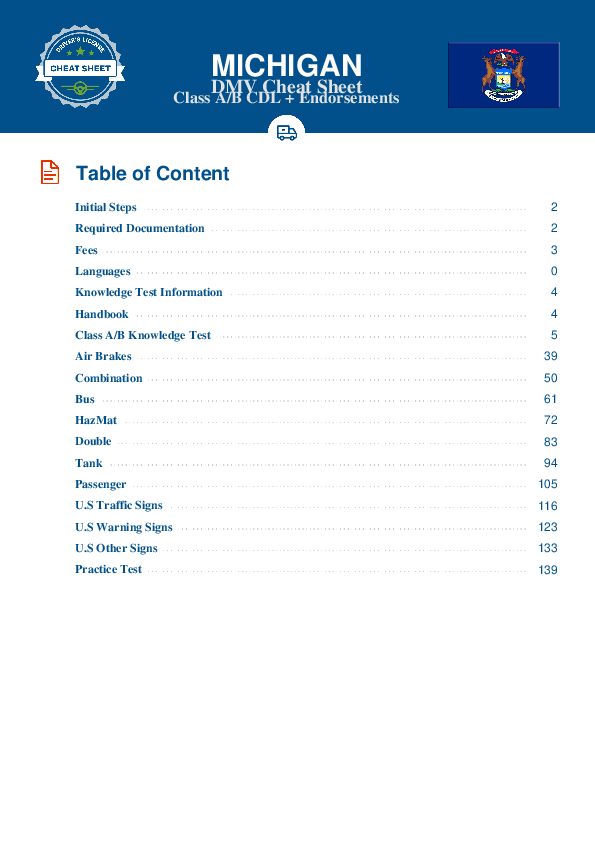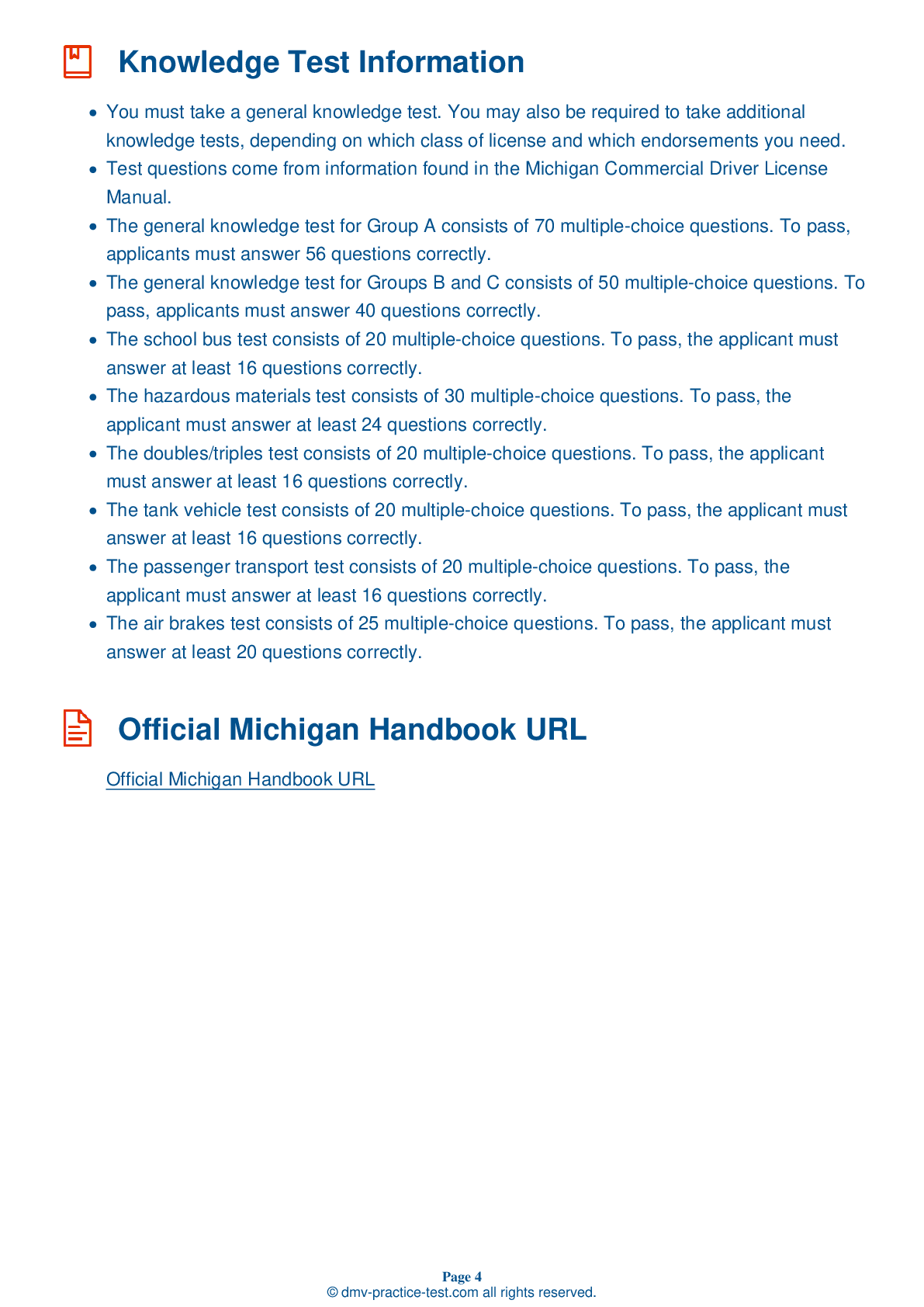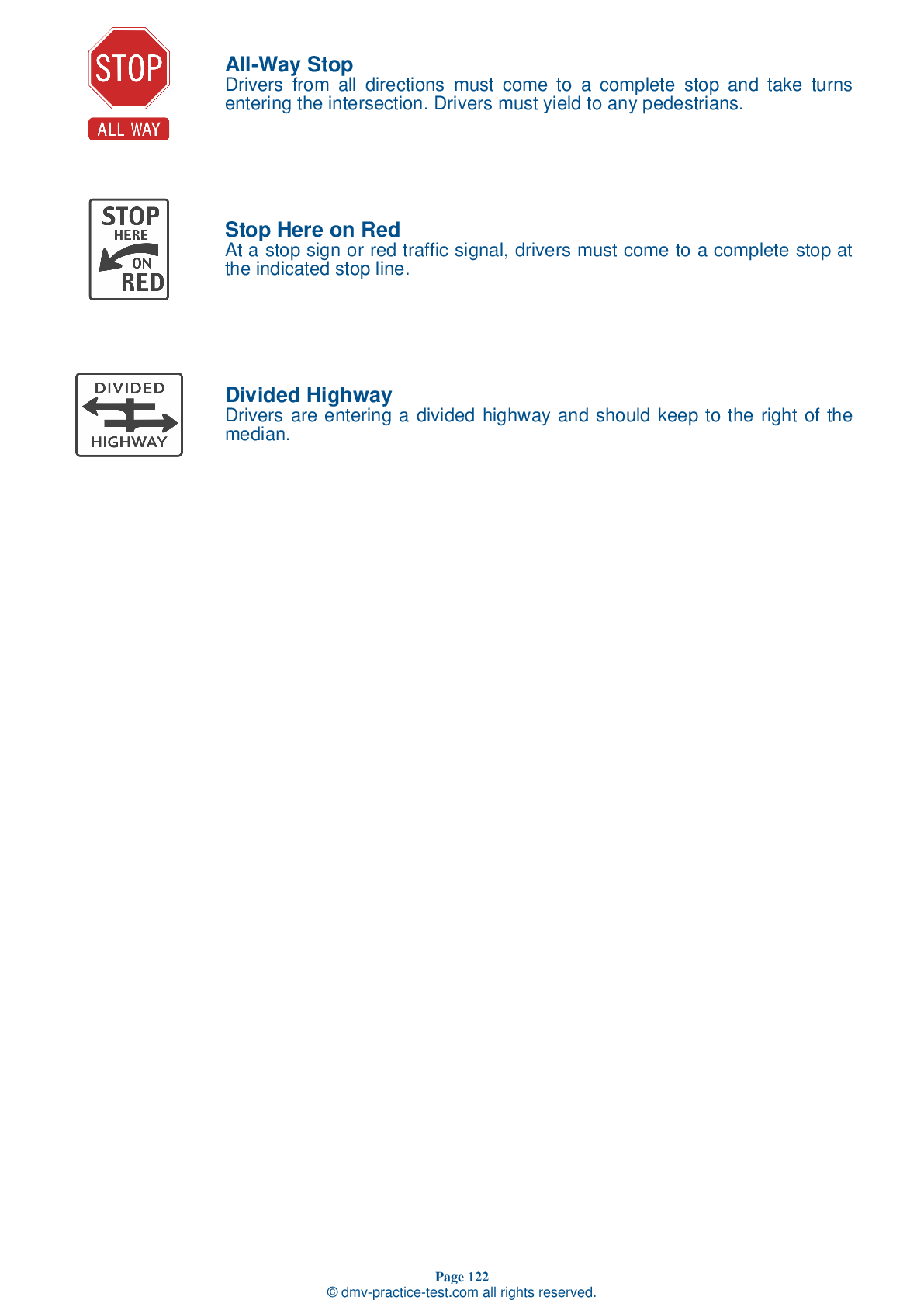Double #2
Double Triple Test | Michigan 2025 #2 Page 2 of 3
Train for FREE with our Michigan CDL double triple practice test online. The official exam test consists of several obligatory parts, with all of them checking your knowledge of different blocks of road rules. If you need to obtain a MI CDL double triple license in 2025, practice as much as possible. Free sample tests published on our website will help you check and improve your knowledge and boost your grades. Please bear in mind that DMV requirements may vary from state to state.
20
16
20
8 . When applying your brakes, the vehicle should:
Your vehicle pulling to one side or the other while you are braking can indicate trouble with the brakes.
9 . An after-trip inspection should be done:
You should always complete an after-trip inspection of your vehicle at the end of a trip, day, or tour of duty. Complete a vehicle inspection report, if required.
10 . A trolley valve:
The trailer hand valve (also referred to as the trolley valve or Johnson bar) is a mechanism that works the trailer brakes. It should only be used to test the brakes. Using it while the vehicle is being driven could cause a skid. Never use the trailer hand valve while parking because doing so may release the air pressure from the braking system, releasing the brakes that are holding the vehicle in place.
11 . Radial and bias-ply tires:
Radial and bias-ply tires should not be used together. All wheels on a vehicle should be the same style and equally-sized.
12 . When approaching your vehicle as part of a pre-trip inspection, seeing fresh oil underneath the vehicle is:
When approaching your vehicle, you should check under the vehicle for fresh oil, coolant, grease, or fuel leaks. Spotting any of these before a trip is a cause for concern.
13 . When accelerating on a surface with poor traction, such as a wet road, a driver should:
You should accelerate very gradually when driving under conditions that create poor traction.
14 . A driver should ensure that:
It is essential to the safe operation of a CMV that cargo be properly loaded. Improper loading can affect handling and damage the vehicle. Additionally, improperly loaded materials can cause injury or death by falling off of the vehicle.
2025 Michigan | Frequently Asked Questions
A CDL Class A license in Michigan allows the holder to operate any combination of vehicles with a Gross Combination Weight Rating (GCWR) of 26,001 pounds or more, provided the Gross Vehicle Weight Rating (GVWR) of the vehicle(s) being towed is in excess of 10,000 pounds. This typically includes tractor-trailers, truck and trailer combinations, and flatbeds.
A Class A CDL license in Michigan permits the holder to operate vehicles such as tractor-trailers, truck and trailer combinations, tanker vehicles, livestock carriers, and flatbeds. Essentially, it covers any combination of vehicles with a Gross Combination Weight Rating (GCWR) of 26,001 pounds or more if the towed vehicle exceeds 10,000 pounds.
To obtain a Class A CDL license in Michigan, you must be at least 18 years old (21 for interstate driving), have a valid Michigan driver's license, pass a vision test, and complete a self-certification of medical fitness. You also need to pass written knowledge tests and a skills test, which includes a pre-trip vehicle inspection, a basic controls test, and an on-road driving examination.
In Michigan, you must be at least 18 years old to qualify for a Class A Commercial Driver's License (CDL) for intrastate driving (within Michigan only). However, to drive interstate (across state lines) or to haul hazardous materials, you must be at least 21 years old.
While not always required, specific endorsements can be added to your Class A CDL license to permit the operation of certain vehicles or transport of specific goods. These include T (Double/Triple Trailers), P (Passenger), N (Tank Vehicles), H (Hazardous Materials), and X (Combination of Tank Vehicle and Hazardous Materials). Each endorsement requires passing additional knowledge tests.
The Class A CDL skills test in Michigan encompasses three parts: a pre-trip inspection, a basic vehicle control test, and an on-road driving test. The pre-trip inspection tests your ability to assess the safety of your vehicle. The basic control test evaluates your ability to maneuver and control the vehicle. The on-road test assesses your ability to safely operate the vehicle in various traffic situations.
Yes, certain limitations can be imposed on Class A CDL license holders in Michigan. These are called restrictions and are marked on the license. For example, an "E" restriction prohibits manual transmission use, an "L" restriction prohibits operation of vehicles with full air brakes, and a "Z" restriction prohibits the operation of a commercial motor vehicle equipped with any braking system operating fully on the air brake principle.
In Michigan, the written Class A CDL test is primarily administered in English, as federal regulations require commercial drivers to read and speak English. However, some locations may offer the test in other languages. It's recommended to contact your local testing center for specific information about language accommodations.
Yes, you can request accommodations for the Class A CDL written test if you have a disability. Michigan's Department of State is committed to providing accessible testing. The exact accommodations depend on the nature of your disability. Contact your local testing center in advance to discuss your needs and make appropriate arrangements.
Yes, if you don't pass the Class A CDL written test in Michigan, you can retake it. However, you must wait at least 24 hours before retesting. If you fail the test three times, you must wait 30 days from the last attempt to retake it. There may be additional fees for retesting.



